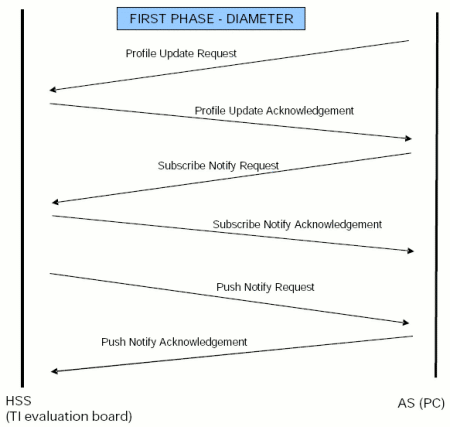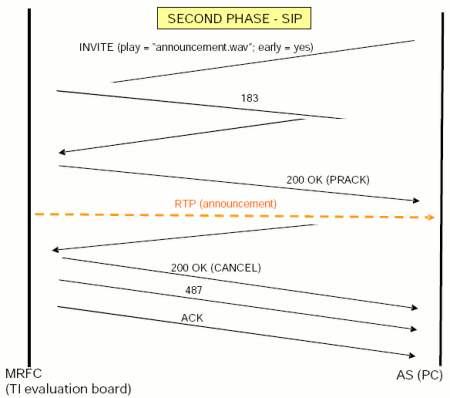Linux powers DSP-based IP multimedia demo
May 16, 2006 — by LinuxDevices Staff — from the LinuxDevices Archive — 3 viewsLinux is powering both ends of an IMS (IP multimedia service/subsystem) protocol stack demo at the Fon conference in Europe this week. Netbricks's demo of its SIP-Bricks and Diameter-Bricks stacks running on TI DSPs (digital signal processors) via Jaluna's Linux OSWare could be a “major step” toward all-IP-based IMS environments, Jaluna says.
The demo includes a PC running Linux, along with the Netbricks SIP-Bricks and Diameter-Bricks protocol stacks. SIP-Bricks is a standard session-initiation protocol (SIP) stack for IMS, while Diameter-Bricks is an IMS-targeted implementation of diameter, an authentication protocol that aims to be “twice Radius.”
The PC is connected by Ethernet to a TI TMDSEVM642 DSP evaluation board, running Linux and Jaluna OSWare for Linux. The DSP system also runs the Netbricks SIP and Diameter stacks, along with a “software responder.”

Netbricks demo
During the demo, the DSP board simulates an HSS (home subscriber system) and MRFC/P (media resource function controller/processor), while the PC simulates an AS (application server). The AS attempts to update a user profile on the simulated HSS, and perform a subscribe/notify operation. It then establishes a SIP session with the simulated MRF, and receives from the MRF a vocal announcement to the effect that the service is not available.
The transport layer comprises Linux's native UDP/IP stack. During the demo, an Ethereal instance on the PC enables packet inspection. The diagrams below are intended to illustrate how the stacks work.


Netbricks Diameter and SIP stack interaction
Netbricks says it limited the demo to its SIP and Diameter stacks “in order to target a realistic goal achievable before mid-May.”
Didier Raffenoux, president of Netbricks, stated, “Efficient IMS control protocols functionality on TI's DSP will enable the control functionality to also run on that platform, which is already present in the media domains of IMS.”
Mark Milligan, Jaluna's VP of marketing, stated, “Our virtualization technology on TI's DSP enables a fast and easy implementation of Netbricks software. Jaluna OSware, Linux Edition on TI's carrier infrastructure platform can be the basis for a new set of applications migrating to DSP.”
TI's European business development manager, Josef Alt, stated, “By running higher-level protocol stacks and network layers in an IMS environment, we believe that we are redefining what a digital signal processor can do. TI's DSPs offer a greater breadth and depth of support for voice, data, and video processing than other general purpose processors.”
IMS is a standards-based approach to integrating mobile phone networks with IP-based, Internet-like networks. IMS aims to enable easier delivery of rich multimedia content to mobile devices, as well as “fixed mobile convergence” (FMC), or the use of devices on both cellular and WiFi radio networks, often with “seamless roaming” between networks.
Jaluna says enabling Linux to run on DSP blades in IMS applications represents a “significant step toward realizing an all-IP communications infrastructure.” The company has previously announced at least one Linux-based OSWare design win in mobile infrastructure, and another in mobile phones.
This article was originally published on LinuxDevices.com and has been donated to the open source community by QuinStreet Inc. Please visit LinuxToday.com for up-to-date news and articles about Linux and open source.